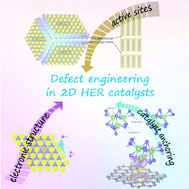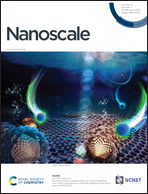Defect engineering in two-dimensional electrocatalysts for hydrogen evolution
Abstract
The electrocatalytic hydrogen evolution reaction (HER) is an efficient and economic pathway to generate clean hydrogen energy in a sustainable manner. To improve the HER activity of Earth-abundant catalysts, reducing the dimension of materials is an effective strategy, and in this context two-dimensional (2D) materials have received substantial research attention owing to their large surface area and 2D charge transport channels. However, the thermodynamically stable basal surface of 2D catalysts is usually inactive in catalysis, which significantly impedes further optimization of the 2D HER catalysts. In this Minireview, we highlight in detail that defect engineering in 2D catalysts could bring multiple benefits in improving the HER activity. From the point of view of kinetics, defect sites could serve as active sites for catalyzing the HER process directly, and the introduction of defect structures may result in the optimization of electronic structures of the catalysts, thereby facilitating the HER process. Besides, for catalytically inert substrate materials, the defect sites could act as anchoring sites for catalyst loading, thus realizing efficient HER performance with the aid of enhanced electric conductivity. We anticipated that this Minireview could provide useful guidance for designing advanced HER catalysts in the future.

- This article is part of the themed collection: Recent Review Articles


 Please wait while we load your content...
Please wait while we load your content...